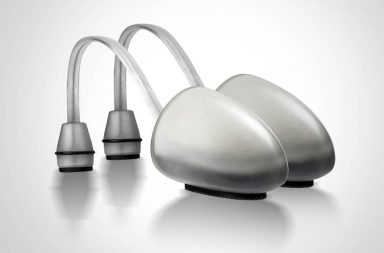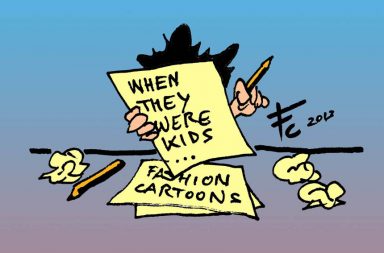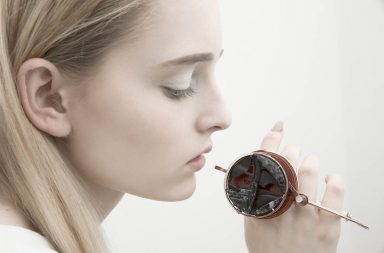It’s not easy to effect change, and that’s something the Belgian designer Mats Rombaut knows well.
Rombaut, who lives in Paris, expresses a philosophy on life with his footwear. Using minmalist design with pure and simple lines, his shoes are handmade in Italy with biodegradable materials from Ugande that don’t damge the environment. He thinks that it’s not a good time for independent designers who are looking for new ways to think and to create. We here at So Catchy! were drawn to his attitude on life, and the mastery which he applies to the fashion industry, creating a perfect balance between innovation, beauty and respect for nature.
SO CATCHY!: Could you explain to us how an economist decided to dedicate himself to the world of fashion?
MATS ROMBAUT: I wouldn’t classify myself as an economist. I have always been interested in fashion because it’s a way to express yourself, like a language. It’s an extension of your personality, a tool to define yourself as a unique human being.
I knew early on I wanted to be in control of my own company, so I thought it would be good to study economics first.
SC!: Tell us how you came upon the idea of combining design with sustainability and eco-friendly materials
MR: I wanted to add something to the fashion industry, in a way that I found innovative and with a vision on the future. I saw so many wasteful brands around me and wanted to help change the fashion industry. So it started as a challenge; I wanted to make a 100% plant-based shoe that would not compromise the resources of our planet. I wanted to work with alternative materials, ethically sourced, in order to make a statement, to show it can be done differently without cruelty involved.
SC!: Some people think that aesthetics and design are not compatible with the use of environmentally friendly materials, do you agree?
MR: No, I don’t agree at all. You have to be more creative and demanding. If you go to a material fair, you will not find environmentaly friendly materials because big companies aren’t making them. It’s harder to get them and manipulate them into something cool. I believe we’re only at the beginning of the ecological revolution so I hope it will be easier to have access to nice sustainable materials in the future.
SC!: Your work is more than just design, it is a philosophy, what audiences are targeted in your designs?
MR: I target a conscious and intellectual consumer, educated in more than only fashion. Somebody who likes to take a stand.
SC!: Lately we are hearing about eco- fashion, what does this concept suggest to you?
MR: It has become a trend and the word eco has become meaningless. I think this green-washing, is a sad practice: companies see the opportunity for profit in the emerging ‘eco-conscious’, consumers and they take advantage of it. However, it’s only in words and marketing, not in actions. Some brands market their clothes as ‘eco’, because they have the ‘hippy chic’ look or because a small percentage of their materials is ecological.
Now also material suppliers jumped on the bandwagon and market themselves as offering ‘ecological fur’ , ‘natural, biodegradable leather’ (ALL leather is natural and biodegradable) just to give it a touch of ‘sustainability’.
I hope designers will take the time to educate themselves when it comes to materials and their origins. It’s also important to be able to distinguish different concepts like ‘natural’, ‘bio’, ‘eco’, ‘sustainable’ because they are very vague and subjective.
SC!: How would you define your work?
MR: I would define it as contemporary, a new form of rebellion.
SC!: In your latest collaboration with the firm Honest By, models are naked, without artifice, pure essence, as we can see in your work. What did you want to communicate with this collection?
MR: The naked models were an idea of Bruno Pieters because he wanted to show the purity of the shoes. By showing naked models, the focus is on the shoes. The poses they take are those of statues. We wanted to catch natural moments with a series of strong, intelligent and curious men and women.
SC!: How do you apply respect for the environment to your daily life?
MR: As I live in Paris, I take the bike a lot or walk to wherever I have to be. I recycle my garbage, don’t eat meat, try to buy bio as much as I can, I buy maybe 3 garments a year… These are all little things but I’m sure to make bigger changes in the future.
SC!: Today society is increasingly aware and concerned about knowing the origin of the materials, manufacturing processes, and their effects on health. Do you think it is simply a fad or will it last?
MR: I hope this concern will remain. In general we as consumers are so disconnected from the sourcing/manufacturing/pricing process that it’s easy to be brainwashed by marketing. After a while we tend to forget about the factories that collapse in Bangladesh and the lives that are taken because our Facebook news feed is full of crap. It’s important that the current generation keeps reminding everyone about the hidden misery behind the supply chain. This way it won’t be a fad.
SC!: Your clothes require a rather laborious process, do you believe that fashion made with organic products can compete with traditional fashion regarding costs and final price?
MR: Very laborious indeed. There are 2 factors that make the final price: materials and labour. The labour I rely on is very expensive. It is a bit like haute couture and prêt-à-porter, the labour and quantities are different so they are hard to compare. Prê-à-porter is always more profitable. Also the materials I use are expensive, so there again it is hard to compete on costs.
However, there is hope. If the consumer starts asking more sustainable fashion, companies like H&M will be forced to offer it. Prices of organic and sustainable materials will go down and they’ll be able to compete with traditional fashion.
SC!: What do you think of the current state of fashion and where do you think it is going?
MR: To be honest I have no idea what it is evolving to. I feel like luxury houses have become more powerful now that they master the social media skills they were lacking some years ago. They are omnipresent and dictate trends and taste. Currently it’s not a great time for young independent designers. In times of crisis, customers go for what they know, for sure values.
Unfortunately I think this current ‘financial crisis’ is just a wake-up call, the start of a correction of our expectations. The positive side is that people will become more conscious of their resources, their environment and about how we are brainwashed into everything we buy: from food, to clothes, to music and other entertainment. It’s easy to get caught up in this comfort zone but it doesn’t fulfil you. I hope more people with ideas for positive change (in fashion) will stand up and use the mainstream channels to get their message out there!

SC!: All your shoes are handmade and in a traditional way, why is it important to you to preserve the essence of small businesses?
MR: It is vital for the happiness of people and the diversity of culture. Every shoe factory is different in size, skills, atmosphere… With the crisis and competition from abroad, a lot of them have gone out of business or been bought by big groups. Skilled patternmakers are lost, people become unemployed and it’s a vicious circle. If you leave the power in the hands of big multinationals, you leave decisions to shareholders which just want an extra percentage on their share price. They don’t care about the lives of patternmaker X or that the quality of products has gone down because they are so detached from it. Diversity and attachment to the small businesses is key to keep a good balance.
SC!: Have you thought about diversifying your products?
MR: Yes. I’m going to do bags and other accessories soon.
SC!: What designers do you admire and inspire you?
MR: Raf Simons. He’s so ahead of everyone. When you look at his collections from the 90s, they still feel modern today.
SC!: Could you tell us what are you working on now?
MR: I’m working on new things, but I won’t be too specific. The designs and materials will be less experimental but will have the same aesthetic. The products will be more affordable and more durable!
Gallery:
Photography: Virgili Jubero
Art Direction: David Fanfani
Creative Directions: Mats Rombaut
Model: Giovanni Leonardo Bassan
Press: Florence Teerlinck
Translation and layout by Michael Padilla







